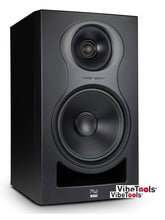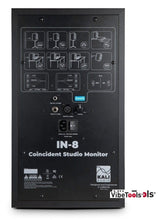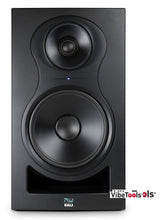Kali Audio IN-8 Studio Monitor (Pair)
Features
IN-8:
140WClass D Power
37 HzLower Frequency Response
< 1.4% System THD94 dB @ 1M
114 dBMax SPL
Features
...
Features
IN-8:
140W
Class D Power
37 Hz
Lower Frequency Response
< 1.4% System THD
94 dB @ 1M
114 dB
Max SPL
Features
Co-Axial Midrange and Tweeter
A three-way with impeccable imaging.
8-Inch Woofer
Powerful, clean bass. Crossed over at 330 Hz to make the IN-8 an acoustic point source.
Low Noise Port Tube
Precisely engineered using airflow simulations for powerful bass without port noise.









 *Klippel data from AudioScienceReview.com
*Klippel data from AudioScienceReview.com